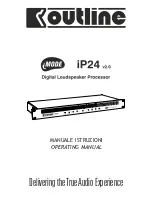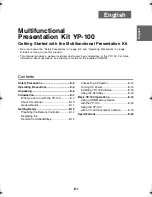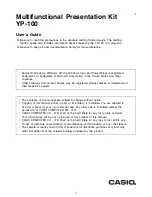
Cortex-M4 Peripherals
ARM DUI 0553A
Copyright © 2010 ARM. All rights reserved.
4-24
ID121610
Non-Confidential
If you disable a system handler and the corresponding fault occurs, the processor treats the fault
as a hard fault.
You can write to this register to change the pending or active status of system exceptions. An
OS kernel can write to the active bits to perform a context switch that changes the current
exception type.
Caution
•
Software that changes the value of an active bit in this register without correct adjustment
to the stacked content can cause the processor to generate a fault exception. Ensure
software that writes to this register retains and subsequently restores the current active
status.
•
After you have enabled the system handlers, if you have to change the value of a bit in this
register you must use a read-modify-write procedure to ensure that you change only the
required bit.
4.3.10
Configurable Fault Status Register
The CFSR indicates the cause of a MemManage fault, BusFault, or UsageFault. See the register
summary in
for its attributes. The bit assignments are:
The following subsections describe the subregisters that make up the CFSR:
•
MemManage Fault Status Register
•
•
.
The CFSR is byte accessible. You can access the CFSR or its subregisters as follows:
•
access the complete CFSR with a word access to
0xE000ED28
•
access the MMFSR with a byte access to
0xE000ED28
•
access the MMFSR and BFSR with a halfword access to
0xE000ED28
•
access the BFSR with a byte access to
0xE000ED29
•
access the UFSR with a halfword access to
0xE000ED2A
.
[2]
-
Reserved.
[1]
BUSFAULTACT
BusFault exception active bit, reads as 1 if exception is active
[0]
MEMFAULTACT
MemManage exception active bit, reads as 1 if exception is active
a. Enable bits, set to 1 to enable the exception, or set to 0 to disable the exception.
b. Pending bits, read as 1 if the exception is pending, or as 0 if it is not pending. You can write to these bits to change the pending
status of the exceptions.
c. Active bits, read as 1 if the exception is active, or as 0 if it is not active. You can write to these bits to change the active status
of the exceptions, but see the Caution in this section.
Table 4-24 SHCSR bit assignments (continued)
Bits
Name
Function
Memory Management
Fault Status Register
31
16 15
8 7
0
Usage Fault Status Register
Bus Fault Status
Register
UFSR
BFSR
MMFSR
















































